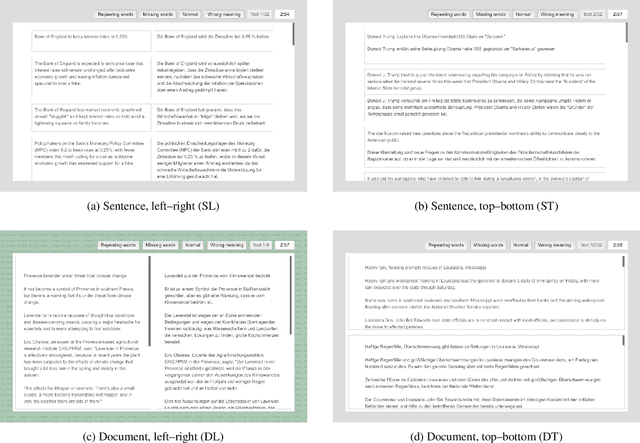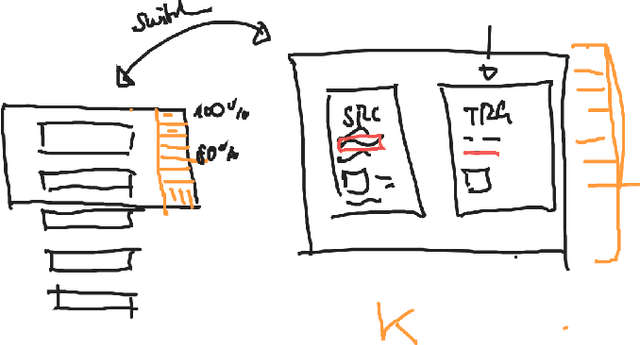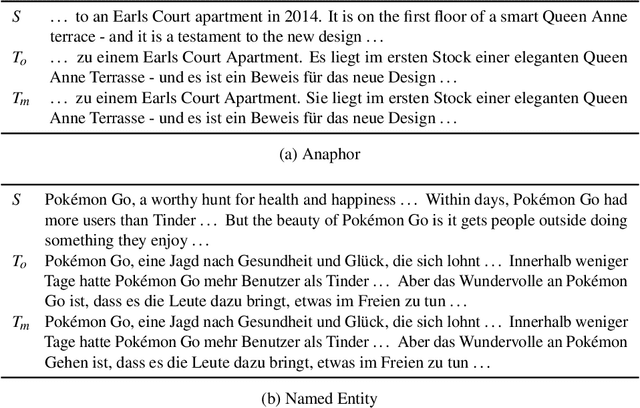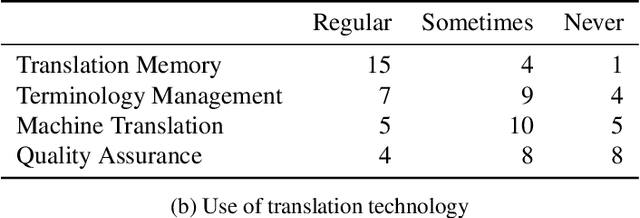The Impact of Text Presentation on Translator Performance
Paper and Code
Nov 11, 2020



Widely used computer-aided translation (CAT) tools divide documents into segments such as sentences and arrange them in a side-by-side, spreadsheet-like view. We present the first controlled evaluation of these design choices on translator performance, measuring speed and accuracy in three experimental text processing tasks. We find significant evidence that sentence-by-sentence presentation enables faster text reproduction and within-sentence error identification compared to unsegmented text, and that a top-and-bottom arrangement of source and target sentences enables faster text reproduction compared to a side-by-side arrangement. For revision, on the other hand, our results suggest that presenting unsegmented text results in the highest accuracy and time efficiency. Our findings have direct implications for best practices in designing CAT tools.
 Add to Chrome
Add to Chrome Add to Firefox
Add to Firefox Add to Edge
Add to Edge